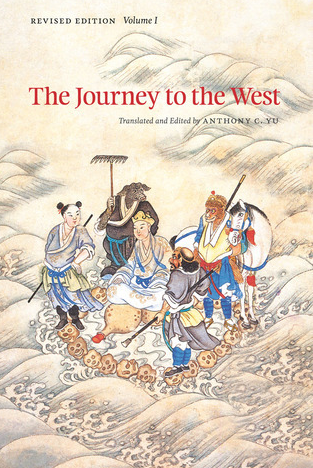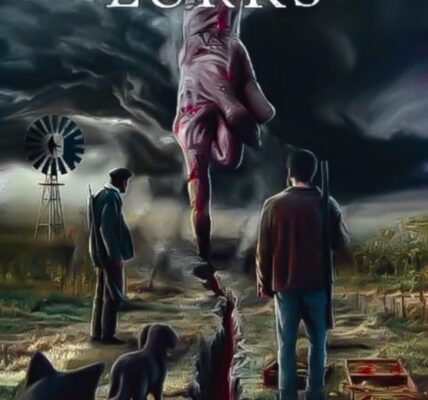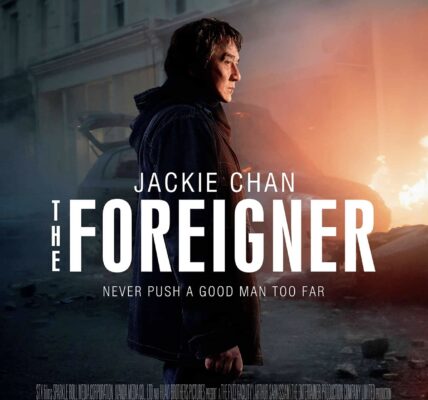1. Plot Summary
Journey to the West: Conquering the Demons is set before the classic pilgrimage we know from Journey to the West. The movie follows Xuan Zang (a young aspiring demon hunter / monk) who is convinced by his teacher that demons should be tamed, not destroyed. His method: using a book of nursery rhymes and other non-violent means to reach demons’ humanity.
He first confronts a water (fish) demon terrorizing a riverside village. Meanwhile, Miss Duan, another more aggressive & skilled demon hunter, uses force and martial skill rather than the gentler methods Xuan Zang prefers. She becomes both ally and foil (and has romantic interest in him) as they cross paths facing more demons: the pig demon in a haunted restaurant, and ultimately the Monkey King, who is imprisoned. In the process Xuan Zang wrestles with his beliefs, abilities, and what “true strength” means.
The setting is mythic, combining traditional Chinese fantasy landscapes, villages, forests, rivers, a lotus garden, caves, demons in both monstrous and disguised forms.
2. Notable Elements
What makes this film special (and some less-successful parts):
What stands out / strengths:
- Blend of comedy, action, fantasy, horror: The movie doesn’t stay purely comedic or purely serious. Stephen Chow’s trademark “mo lei tau” (nonsense / absurdist) comedy shows up — unexpected humor in the midst of demon attacks, quirks in characters, weird or surprising transitions. That keeps things lively.
- Strong visual effects / creature design: The depiction of demons is imaginative — the pig demon, the fish demon, and of course the Mythical Monkey King. Some CGI is quite ambitious, especially in action & fight sequences.
- Character dynamics: Miss Duan is a strong female character, capable, independent, both a friend and rival. Xuan Zang’s idealism vs the more conventional approach to demon-hunting gives tension. Wen Zhang does well portraying Xuan Zang’s innocence / moral doubts; Shu Qi pulls off both humor and seriousness in her role.
- Themes via unusual methods: Using nursery rhymes, kindness, trying to bring out the “good” in demons rather than just force is a refreshing twist. It gives a philosophical depth to the action.
What’s weaker / could be improved:
- CGI inconsistency: While many of the visual effects are impressive, there are spots where the CGI looks less polished, or the scale feels a bit too grand or fantastical beyond what the budget supports. Some sequences might feel over-stuffed visually.
- Tone shifts: Because it mixes comedy, horror, romantic subplot, philosophical ideas, and large-scale action, sometimes the tone may feel uneven. Moments of dread or violence might clash with slapstick or romantic comedy bits. Some viewers might find this jarring.
- Pacing or emotional investment: Some of the emotional stakes (e.g., with Miss Duan, or Xuan Zang’s internal struggle) might feel less fleshed out than action scenes; you sometimes want more build toward certain relationships or conflicts.
3. Themes and Messages
Key themes / messages and relevance:
- Mercy vs force: One of the central moral threads is how to deal with what is “evil” or monstrous. Xuan Zang’s method suggests compassion, trying to awaken goodness rather than simply destroying. This asks a deeper question: what does true “strength” mean? Is it violence or understanding, or both?
- Identity, sacrifice, growth: Xuan Zang is on a journey toward self-discovery, spiritual growth. He learns through pain (loss, confrontation) that ideals sometimes must be tested. There’s sacrifice: physical, emotional.
- Love / attachment vs enlightenment: The romantic subplot (Miss Duan’s feelings for Xuan Zang) poses a challenge to the monk’s detachment. He resists romantic love in his quest, but the narrative shows how such attachments can both complicate and enrich one’s path.
- Good inside the monster / redemption: The film suggests that demons are not purely evil: many are tragic, or have been wronged, or can be convinced / subdued. This has spiritual overtones in Buddhist / Daoist idea of transformation, compassion.
- Suffering as part of enlightenment: Xuan Zang’s suffering, his doubts, his failures are shown not merely as obstacles but as vital to his growth.
Relating to holiday traditions or sentiments: While the film is not holiday-based, many holiday traditions revolve around compassion, forgiveness, sacrifice, love, and community—values that the story echoes. Themes like mercy, redemption, love vs attachment might resonate during holidays that focus on giving, family, empathy.
4. Personal Impressions
What worked for me:
- I found the film very entertaining. The mix of humor + action + mythology is well done. Some scenes are genuinely moving: the moments where Xuan Zang’s ideals are tested, or where Miss Duan shows courage, are satisfying.
- The visuals are often gorgeous: the landscapes, the demon designs, the showdowns. The large-scale final confrontation, while perhaps over the top, is thrilling.
- The philosophical underpinnings give it more depth than your average fantasy action movie. Xuan Zang’s ideals (nursery rhymes, kindness) might seem whimsical, and yet they meaningfully contrast with more brutish methods.
What I felt less good about:
- Some tonal inconsistency distracted me—for example, switching abruptly from a humorous scene to a scary or graphic demon attack. Sometimes the emotional arcs (love, loss) feel a bit rushed.
- The CGI, though impressive in many parts, occasionally doesn’t hold up under closer scrutiny (especially in lighting or integration in certain effects).
- The film is long and ambitious; some subplots might feel under-resolved or side characters underutilized. For example, certain demons get little backstory beyond their external threat.
5. Audience Recommendations
Who might particularly enjoy this:
- Fans of fantasy / mythological stories, especially with Chinese / Asian folklore background.
- People who like action-comedy blends: martial arts, demon fights, funny banter, visual spectacle.
- Viewers who appreciate moral / philosophical undercurrents in genre films: compassion vs violence, growth from suffering, etc.
- Those who enjoy strong female characters in action settings (Miss Duan is a highlight).
- Audiences willing to accept some inconsistency in tone for the sake of entertainment—if you like spectacle + emotion more than rigid genre purity, this is for you.
Less recommended for:
- Those who prefer very serious tone throughout without shifts to comedy or romantic subplot.
- Viewers who dislike or are uncomfortable with supernatural violence / scary demons.
- People who demand perfect visual effects or hyper realism; the fantasy / CGI sometimes lean toward stylized or exaggerated.
6. Conclusion & Rating
Overall, Journey to the West: Conquering the Demons is a richly imaginative, action-packed, humorous, and ultimately heartfelt take on a familiar myth. It takes classic material and makes it feel fresh by focusing on compassion, testing moral choices, and giving the demons more of a chance for redemption than simple evil. While not flawless—tone shifts and a few uneven visuals are real—it succeeds in delivering a fun, moving, spiritually resonant blockbuster.
Final Recommendation: I’d strongly recommend this film, especially for people who like mythic fantasy with humor, some philosophical weight, and ambitious spectacle. It’s a film that entertains and makes you think.
Star Rating: ★★★★☆ (4 out of 5)
Watch more:




